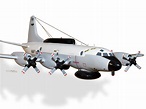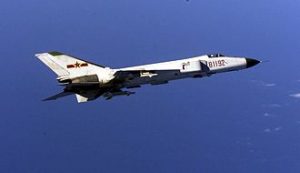 On April 1, 2001, a U.S. Navy EP-3 patrol plane was conducting a reconnaissance flight over the South China Sea and being shadowed by two Chinese Army F-811 jet fighters. One of the Chinese pilots was Commander Wang Wei. Wang had harassed U.S. aircraft before, coming dangerously close and executing threating fly-bys. His name was known because one day he pulled to within 10-feet of a plane’s wingtip and held up a sheet of paper showing his email address. Talk about brashness!
On April 1, 2001, a U.S. Navy EP-3 patrol plane was conducting a reconnaissance flight over the South China Sea and being shadowed by two Chinese Army F-811 jet fighters. One of the Chinese pilots was Commander Wang Wei. Wang had harassed U.S. aircraft before, coming dangerously close and executing threating fly-bys. His name was known because one day he pulled to within 10-feet of a plane’s wingtip and held up a sheet of paper showing his email address. Talk about brashness!

For a jet fighter to fly formation with a large patrol plane is difficult because the cruise speed of the large plane is slow (around 200-MPH) which is near the stall speed of a fighter. The fighter pilot has his hands full to fly that slow and maintain control of his aircraft.
Wang apparently attempted to pull up from underneath the EP-3 thumping it with his jet blast, but lost control and was hit by the propeller of the turbo-prop EP-3. The propeller cut the F-811 in half, presumably killing Wang instantly. The Navy plane was severely damaged and did a snap-roll onto its back, plunging inverted toward the sea. Pilot Osborn used all his strength to attempt to right the plummeting aircraft. Nothing seemed to work. The crew in the back of the aircraft was pinned inside the fuselage by the G-forces. The plane dropped that way for 30-seconds, the longest 30-seconds the crew of 24 ever experienced in their apparent soon-to-expire lifetime. Screams, prayers, and shouts of resignation were heard throughout the aircraft. Slowly, ever so slowly, Lieutenant Osborn began to pull the aircraft out of its fatal dive.
Once level, Osborn had a decision to make. The damaged airplane would not stay in the air long. Ditching at sea was not an option because the large radome on the underside of the plane would stop the plane immediately when hitting the water causing it to break up. Bailing out was also not an option as the only exit door was by one of the still operating propellers and the prop blast would throw those bailing out into the tail. If Osborn could keep the plane in the air long enough, he might be able to fly to the island of Hainan and crash-land.It would take 20-minutes to get to the airfield on the island. During that time the crew hastily gathered classified documents and jettisoned them into the sea . Repeated Mayday calls to Hainan for permission to land were not answered. Once the airfield was reached, the EP-3 landed, skidded to an abrupt but safe stop and was immediately surrounded by People’s Liberation Army Soldiers.
China accused the U.S. crew of flying in prohibited Chinese airspace, deliberately colliding with the F-811, landing in China without permission, and demanded an apology for its aggressive attack.
Long story short, after confining the crew for ten-days, the U.S. officially expressed sorrow over the death of the Chinese pilot which China interpreted as an apology for the incident and rereleased the crew. Five months later the aircraft was returned to the U.S. in cut-up pieces.
Beware of China and its intention to dominate the western Pacific … and the world.